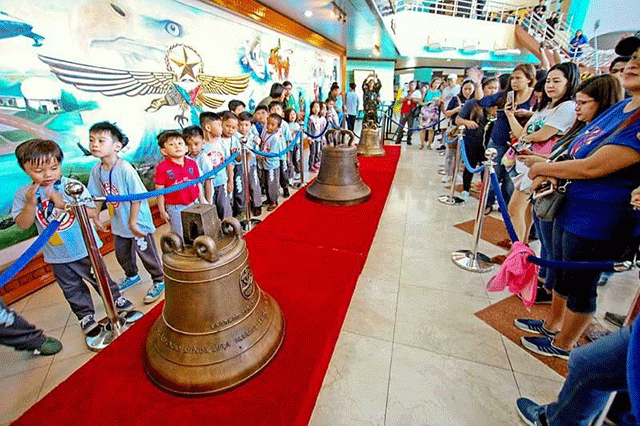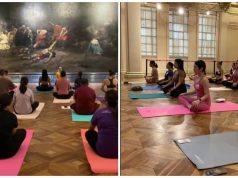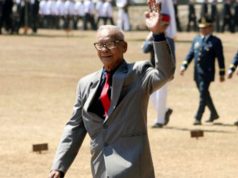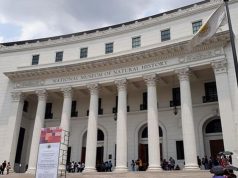A proposal to install one of the recently-returned Balangiga Church Bells at the National Museum in Manila was opposed by members of the Catholic church.
Sen. Juan Miguel Zubiri’s Senate Resolution 965 which he filed shortly before the return of the three bells taken during the Philippine-American War in 1901 seeks to put one of the bells on display at the National Museum “for the appreciation and education” of the general public.”
The bells were returned to Philippine soil on Tuesday, December 11, in fulfillment of the promise made by United States Defense Secretary James Mattis. The three bells were previously displayed in Wyoming as war memorial objects.
The Diocese of Borongan, which exercises jurisdiction over the town of Balangiga in Samar from where the bells were taken, led the opposition to Zubiri’s proposal.
STATEMENT: Borongan diocese opposes transfer of one of the 3 Balangiga bells to the National Museum https://t.co/XEJ2tExlfz
— Diocese of Borongan (@borongandiocese) December 13, 2018
“The Balangiga Bells are sacramentals, that is, they are also sacred artifacts that call the faithful to prayer and worship. But they especially call them to the sacrament of the Holy Eucharist, the highest form of prayer and worship for Catholics,” the diocese said in a statement.
Bishop Crispin Varquez and the clergy added that the bells belonged to their “historical and rightful habitat,” which was the St. Lawrence the Martyr Parish in Balangiga town.
“The Balangiga Encounter at which the bells played a role happened in Balangiga. It is only right that they be returned to Balangiga and stay in Balangiga,” the Borangan diocese said in reference to the history behind the bells, which are believed to have signaled what would be known as the Balangiga Massacre in 1901.
The bells are currently on display at the Philippine Air Force museum at Villamor Air Base in Pasay City but will be transported to Balangiga in Eastern Samar on Saturday for the official turnover ceremony.
The Diocese of Borongan was backed by Rep. Ben Evardone (Eastern Samar), who said that the rightful place of the bells was in Balangiga, explaining that they were religious artifacts and not just museum items.
Zubiri in response to the diocese’s complaints said that calling the move “disrespect to history” was arrogant.
“If they don’t want (it) so be it. But how arrogant can they think that it is disrespect to the history?,” he said in a media interview.
The resolution is currently pending before the Senate Committee on Rules, which Zubiri chairs
Others from Manila are hoping that those from Balangiga can be amenable to the idea of at least one of the bells being placed in the national museum for other Filipinos to see.
A symbol of many things
Historian Rolando Borrinaga, who undertook research on the bells, found that it was the Franciscans, a religious order, who made them—or had them made. “The 1853, 1889, and 1895 bells have the Franciscan coat of arms,” he told CBCP News.
The three bells were taken as war booty following the Balangiga Massacre of 1901, one of the darkest periods in the Philippine-American War that preceded the United States’n colonization of the Philippines. Thousands of Filipinos were believed to have been slaughtered after US Gen. Jacob H. Smith ordered troops to kill “everyone over the age of ten” in retaliation for a previous encounter.
According to historian Xiao Chua, among the first to request the bells’ return were priests: historian-priest Horacio de la Costa and a group of Franciscan priests who claimed the bells belonged to a Franciscan church.
Mattis, the US defense cheif, in August 2018 said that his country would finally give in to the Philippines’ century’s worth of requests, which all resulted to futility due to legal impediments by American law. He said that the return was to honor and strengthen ties between the Philippines and the U.S.
President Rodrigo Duterte in his 2017 State of the Nation address had asked US Ambassador to the Philippines Sung Kim to facilitate the return of the bells.
Some have argued that the return of the bells only represented a fraction of the injustices committed by US colonialism.









